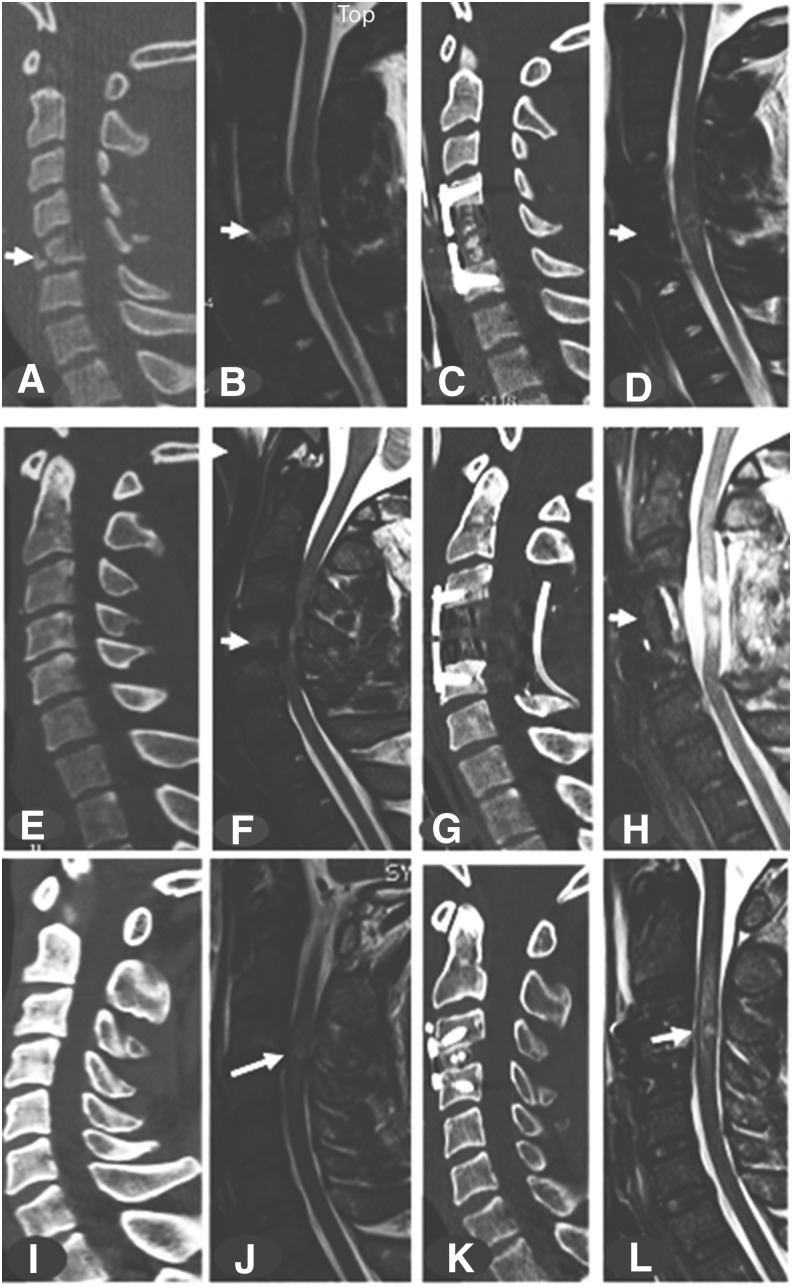FIG. 1.
(A–D) Midsagittal computed tomography (CT) and magnetic resonance imaging (MRI) of a 19-year-old man involved in an automobile accident who was admitted 30 min later to the trauma resuscitation unit (TRU) with a C5 compression tear-drop fracture (arrow); American Spinal Injury Association (ASIA) motor score of 21, and ASIA Impairment Scale (AIS) grade B; intramedullary lesion length (IMLL) at admission was 27.8 mm. A C5 corpectomy was performed 6 h after the accident, which completely decompressed the spinal cord. MRI 34.5 h after surgery indicated an IMLL of 34.4 mm. One year following the accident, his ASIA motor score was 64 and he was AIS grade D. (E–H) Midsagittal CT and MRI of a 42-year-old man who had a mechanical fall and was admitted 30 min later to the TRU with from spinal stenosis and possible extension injury (arrow); ASIA motor score was 8 and AIS grade was A; IMLL at admission was 42.2 mm. He underwent C4 corpectomy and C3–C5 laminectomy with fusion 13 h after the accident, with complete spinal cord decompression. MRI 23 h after surgery indicated an IMLL of 30.9 mm. Six months following the accident, his ASIA motor score remained 8 and he was AIS grade A. (I–L) Midsagittal CT and MRI of a 53-year-old man who had a mechanical fall and was admitted 10.5 h later to the TRU with a C3/4 extension injury (arrow); ASIA motor score was 33 and AIS grade was C; IMLL at admission was 20.3 mm. He underwent discectomy and fusion at C3/4, 36 h after the accident, with complete spinal cord decompression. MRI 49.8 h after surgery indicated an IMLL of 49.6 mm. Fifty-seven months following the accident, his ASIA motor score was 91 and he was AIS grade D.

